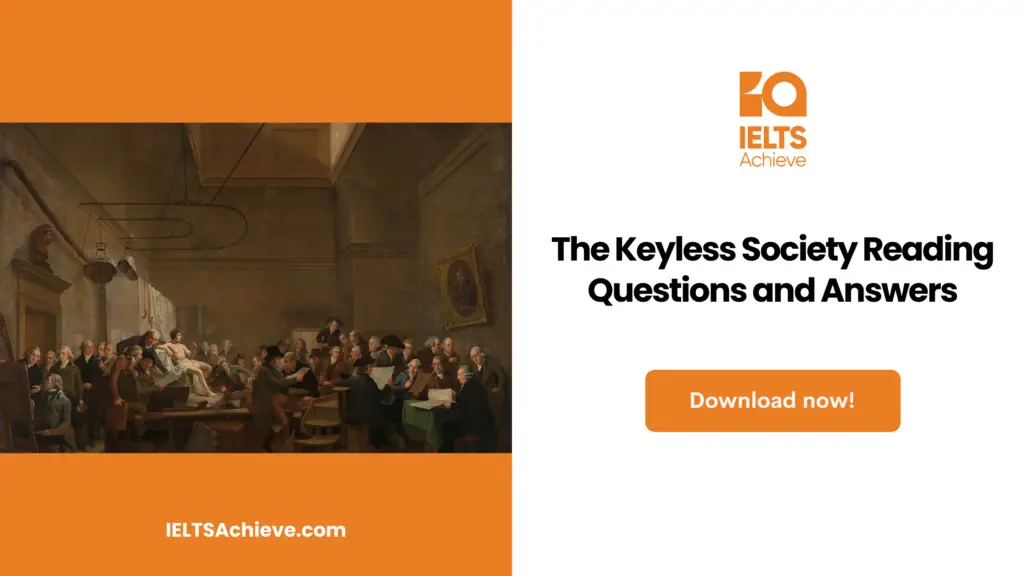The Blog post contains the following IELTS Reading Questions:
- IELTS Reading Flowchart completion
- IELTS Reading True/False/Not given
- IELTS Reading short answer questions
Stay informed and prepared for success – Explore our comprehensive Reading Test Info page to get valuable insights, exam format details, and expert tips for mastering the IELTS Reading section.
IELTS Reading Passage- William Kamkwamba

William Kamkwamba
In his African hamlet of Masitala in Malawi, southeast Africa, William Kamkwamba created a number of windmills that could produce energy at the age of just 14.
William Kamkwamba had to leave school in 2002 because his father whose occupation is a maize and tobacco farmer could no longer afford his tuition. William was nonetheless determined about completing his degree despite this setback. He started going to the neighborhood library that had recently opened in his old elementary school, where he found a tattered science book. He taught himself the fundamentals of physics, mostly by studying pictures and diagrams, despite having only a rudimentary grasp of English. Another book he discovered there had a windmill on the front, which gave him the idea to attempt to construct his own.
He built a small model to get things going. Then, over the course of several weeks, with the assistance of a cousin and a friend, he searched scrapyards instead he discovered old tractor fans, shock absorbers, plastic tubes, and bicycle parts, which he utilized to construct the actual device.
William split some bath pipe in two lengthwise and used hot coals to flatten the curved edges flat before using the pieces as windmill blades. He drove a nail through the center of a corncob, heated the metal red, and then twisted it through the blades to create holes in them. The process of repeatedly heating the nail and boring the holes took three hours. Using the correct nuts and bolts, he linked the blades to a tractor fan before attaching them to the bicycle’s rear axle. The bicycle dynamo produced electricity. The bike wheel spun when the wind blew the blades, charging the dynamo and sending a current through a wire to his house.
He had constructed a raw device that generated 12 volts and lit four lights. When it was finished, the windmill had a wingspan of more than eight feet and was supported by a rickety tower that was 15 feet tall and swayed violently in severe winds. Later, he built a second machine to water the family garden and replaced the weak tower with one that is 39 feet tall.
William Kamkwamba became immediately well-known in his community because of the windmill, but despite his success, he was still unable to go back to school. But as word of his magetsi a mphepo, or “electric wind,” traveled outside of Malawi, things started to shift. When an education official visited his hometown after hearing about the windmill, he was shocked to realize that William had missed five years of school. He organized for the government to pay for him to attend secondary school and invited the media to the farm to witness the windmill. Once bloggers became interested in an article from the Malawi Daily Mail, conference organizers for the Technology Entertainment and Design conference became interested as well.
William received a standing ovation when he spoke at the TED Global conference in Tanzania in 2007. Businessmen offered to pay for his studies and projects, and with the money they gave him, he was able to send his cousin and many friends back to school and take care of some of his family’s medical expenses. He also constructed drip irrigation in his father’s crops and dug a borehole for a well and water pump in his community using the donation.
His family’s crops have been able to grow because of the water pump. In tobacco’s place, they now cultivate maize, beans, soybeans, potatoes, and peanuts. The other villagers’ lifestyles and health have changed significantly as a result of the windmills. William notes the significant changes to the village. “They are now using the time they would have spent going to gather water to accomplish other things. Additionally, since they are drinking clean water, there are fewer diseases. Moreover, the people have stopped using kerosene and can now use the money they had been using to buy fuel for other things.
The example set by William Kamkwamba encouraged other children in the village to study science. They can now see, according to William, that anything they set their minds to may be accomplished. He claims that it has altered how people think.
Unlock your full potential in the IELTS Reading section – Visit our IELTS Reading Practice Question Answer page now!
Recommended Questions:
Renewable Energy IELTS Reading Question with Answer
William Kamkwamba reading answers
Questions 1-5
Complete the flowchart below. Choose NO MORE THAN TWO WORDS from the passage for each answer.

On a tower, he lifted the blades
Boost your performance in Summary, Notes, Table, and Flowchart Completion tasks. Click here to explore our detailed guide and learn how to effectively complete summaries, notes, tables, and flowcharts in the IELTS Reading section.
Questions 6-10
Do the following statements agree with the information given in the reading passage?
In boxes 6-10 on your answer sheet write
TRUE if the statement agrees with the information
FALSE if the statement contradicts the information
NOT GIVEN if there is no information on this
6. William’s farm was visited by foreign journalists.
7. Since the windmill was completed, the villagers’ health has improved.
8. William powered the village’s transportation with the electricity he generated
9. To increase the village’s access to water, William used the funds he was given.
10. William’s accomplishment was initially disregarded by the community.
Enhance your skills in identifying information as True, False, or Not Given. Click here to discover expert strategies and techniques for mastering this question type in the IELTS Reading section.
Questions 11-13
Answer the questions below. Use NO MORE THAN ONE WORD and/or a NUMBER from the passage for each answer.
11. What academic discipline has grown in popularity in William’s village?
12. What source of energy did the locals use before the windmill was constructed?
13. The height of the last tower constructed by William was?
Unlock your full potential in the IELTS Reading section – Visit our IELTS Reading Practice Question Answer page now!
Recommended Questions:
Renewable Energy IELTS Reading Question with Answer
William Kamkwamba reading answers
1. Physics
2. Model
3. Scrapyards
4. pipe
5. Tractor fan
6. Not Given
7. True
8. False
9. True
10. False
11. Science
12. Kerosene
13. 39 feet

We hope you found this post useful in helping you to study for the IELTS Test. If you have any questions please let us know in the comments below or on the Facebook page.
The best way to keep up to date with posts like this is to like us on Facebook, then follow us on Instagram and Pinterest. If you need help preparing for the IELTS Test, join the IELTS Achieve Academy and see how we can assist you to achieve your desired band score. We offer an essay correction service, mock exams and online courses.

